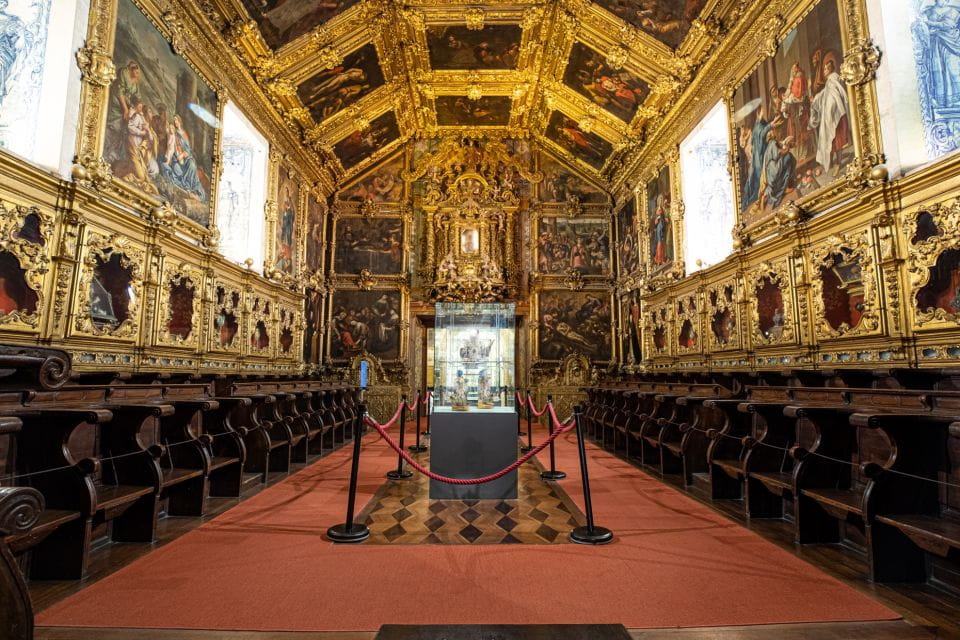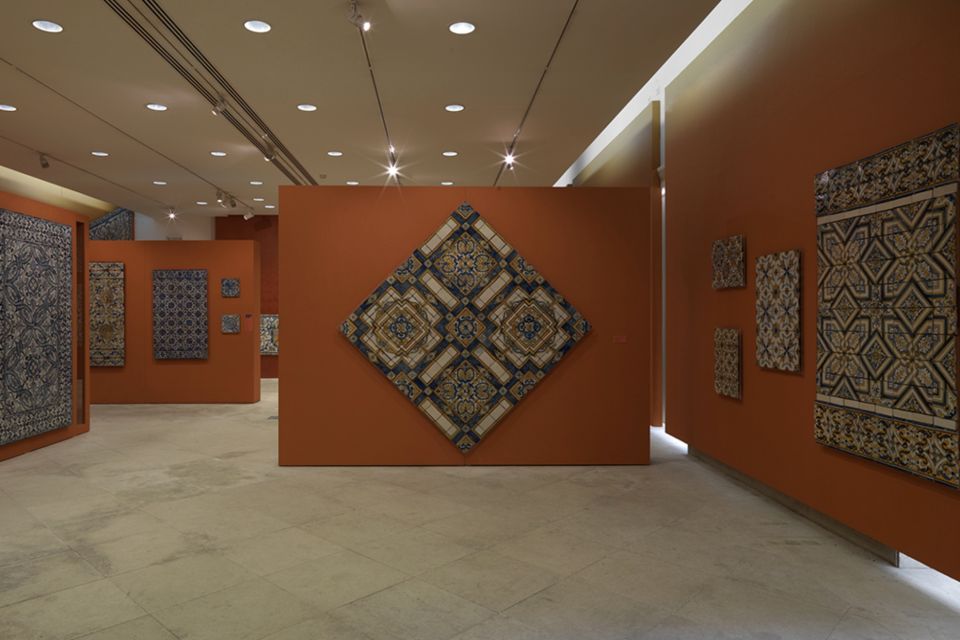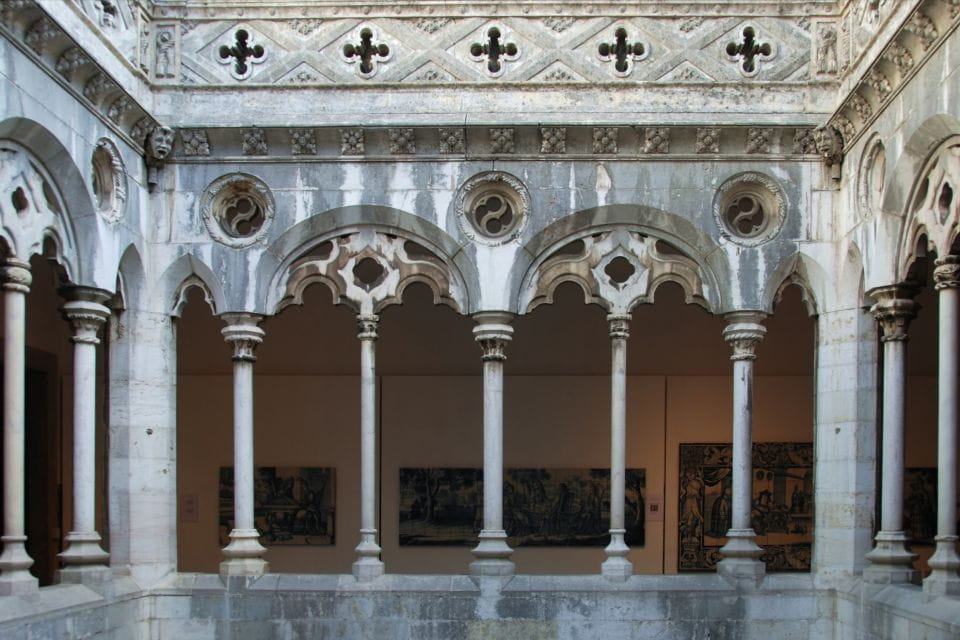Nestled in the heart of Lisbon, the National Tile Museum beckons visitors to explore the captivating world of Portugal’s rich ceramic heritage. With an entry ticket starting at just $8.67, guests can enjoy the museum’s impressive collections, tracing the evolution of tile-making from the 15th century to modern masterpieces. From the intricate azulejo panels to the innovative contemporary designs, this cultural gem offers a unique opportunity to explore the artistry and history that have defined Portugal’s iconic visual identity. Prepare to be captivated as you discover the museum’s treasures, and uncover the stories that lie within each meticulously crafted tile.
Key Points

- The National Tile Museum in Lisbon offers entry tickets starting at $8.67 per person, providing full-day access to its collections and exhibits.
- The museum is located in the former Convent of Madre Deus, showcasing a captivating journey through the evolution of decorative ceramic tiles from the 15th century onwards.
- The permanent exhibition features a chronological display of tile-making craft, highlighting the progression of traditional to modern tile designs and their significance in Portuguese cultural identity.
- The museum boasts an unparalleled collection of decorative ceramic tiles, with stunning examples ranging from detailed to abstract designs, reflecting the enduring legacy of Portuguese tile artistry.
- Visitors can explore the museum’s notable features, including a 16th-century mannerist cloister, a dazzling display of Brazilian wood in the sacristy, and exquisite 18th-century Baroque decor in the Chapel of Saint Anthony.
Ticket Details and Pricing
The National Tile Museum offers entry tickets starting from $8.67 per person, providing visitors with a full day’s access to explore its remarkable collections and exhibits.
With free cancellation up to 24 hours in advance, you can plan your visit with confidence and flexibility.
While this isn’t a skip-the-line ticket, the Museum’s convenient location and free public transport options make it easy to arrive and start your tile-filled adventure.
Whether you’re a tile enthusiast or simply looking to discover Portugal’s rich ceramic heritage, the National Tile Museum’s reasonable pricing ensures an accessible and unforgettable cultural experience for all.
Here are more great tours and experiences we've reviewed in Lisbon
Museum History and Location

Established in 1965, the National Tile Museum proudly became a National Museum in 1980, showcasing Portugal’s rich ceramic heritage within the former Convent of Madre Deus, founded by Queen D. Leonor in 1509.
Located in this historical landmark, the museum features decorative ceramic tiles (azulejos) dating back to the 15th century, as well as a captivating collection of ceramics, porcelain, and faience from the 17th to 21st century.
Visitors can explore the museum’s permanent exhibition, which starts with materials and techniques and then follows a chronological display, allowing them to discover the evolution of traditional tile work in Portugal.
Permanent Exhibition Overview

The museum’s permanent exhibition takes visitors on a captivating journey through the evolution of Portugal’s tile-making craft, unfolding the story of this iconic art form from its 15th-century origins to its present-day manifestations.
Guests will be immersed in a chronological display that showcases the remarkable progression of decorative ceramic tiles, or ‘azulejos,’ over the centuries.
From the earliest examples of traditional tile-work to the more modern and innovative designs, the exhibition offers a rundown of Portugal’s rich tile heritage.
Visitors can admire the intricate patterns, vibrant colors, and exquisite craftsmanship that have made Portuguese tiles renowned worldwide, gaining a deeper appreciation for this integral part of the country’s cultural identity.
Tile Collections and Artistry
The National Tile Museum boasts an unparalleled collection of decorative ceramic tiles, showcasing the remarkable artistry and evolution of this iconic Portuguese craft over the centuries.
From the vivid blues and intricate patterns of 15th-century works to the innovative modern designs, visitors can enjoy the captivating world of azulejos, experiencing the remarkable technical mastery and artistic expression that have made Portuguese tiles renowned globally.
The museum’s chronological display traces the development of tile-making techniques, from the early use of hand-painted glazes to the later introduction of innovative printing methods.
Visitors will be awed by the museum’s stunning examples of tilework, which range from the meticulously detailed to the boldly abstract, each piece a testament to the enduring legacy of this beloved Portuguese art form.
Notable Museum Features
Visitors can’t help but marvel at the National Tile Museum‘s stunning array of notable features, from the splendid 16th-century mannerist cloister to the church’s remarkable paintings and tiles.
The sacristy boasts a dazzling display of Brazilian wood, while the Chapel of Saint Anthony impresses with its 18th-century Baroque decor.
Exploring this historical former Convent of Madre Deus, founded by Queen D. Leonor in 1509, transports visitors back in time. Each meticulously preserved space showcases the museum’s exceptional ceramics, porcelain, and faience collections, tracing the evolution of Portugal’s renowned tile-making artistry.
This unparalleled journey through the country’s rich cultural heritage is a must-see for anyone visiting Lisbon.
Ready for more culture? More museums we feature in Lisbon
Visitor Preparation and Access
Conveniently, visitors can access the National Tile Museum‘s main entrance and show their tickets upon arrival.
Passport or ID, comfortable shoes, camera, water, and weather-appropriate clothing are recommended to fully enjoy the museum’s historical ambiance and impressive tile collections.
Notably, the museum is wheelchair accessible, allowing all guests to explore its renowned mannerist cloister, church, sacristy, and Chapel of Saint Anthony at their own pace.
The museum’s excellent accessibility and visitor-friendly facilities make it an ideal destination for travelers of all abilities, ensuring an enriching and memorable experience discovering Portugal’s remarkable tile heritage.
Customer Ratings and Feedback
With an impressive overall rating of 4.6/5 from 432 reviews, it’s clear the National Tile Museum has captivated visitors through its stunning displays and immersive historical context.
Reviewers consistently praise the museum’s beautiful examples of traditional Portuguese tiles, providing a fascinating chronological exploration that inspires personal tile projects.
Visitors highlight the well-maintained facilities, accessible location, and excellent explanations of the different tile styles and techniques.
Many note the museum’s ability to transport them back in time, offering a glimpse into Portugal’s rich ceramic heritage.
Whether admiring the 16th-century mannerist cloister or the 18th-century Baroque Chapel of Saint Anthony, the National Tile Museum leaves a lasting impression on all who step through its doors.
Museum Experience Highlights
The National Tile Museum immerses visitors in the captivating world of traditional Portuguese tile work, offering a remarkable journey through centuries of artistic evolution. From the museum’s stunning 16th-century mannerist cloister to the church’s remarkable paintings and tiles, every step unveils new artistic treasures.
Highlights include:
- Explore the museum’s splendid collections of tiles dating back to the 15th century, offering a captivating glimpse into Portugal’s rich ceramic heritage.
- Visit the sacristy’s impressive display of Brazilian wood, showcasing the diverse cultural influences that have shaped the nation’s artistic expression.
- Admire the exquisite 18th-century Baroque decoration of the Chapel of Saint Anthony, a true feast for the senses.
- Discover the museum’s permanent exhibition, which guides visitors through the evolution of materials and techniques, providing a comprehensive understanding of this enduring art form.
Frequently Asked Questions
Can I Purchase Tickets On-Site or Are They Only Available Online?
Visitors can purchase tickets on-site at the National Tile Museum. However, purchasing tickets online in advance is recommended to secure entry and avoid potential lines or sell-outs, providing a more seamless and enjoyable museum experience.
What Are the Museum’s Operating Hours and Days of the Week?
The museum is open Tuesday through Sunday, from 10 AM to 6 PM. It’s closed on Mondays. Visitors can explore the museum’s remarkable tile collections and historical exhibitions during these operating hours.
Are There Any Discounts or Special Offers for Students, Seniors, or Families?
The museum offers discounted tickets for students, seniors, and families. Students and seniors can purchase tickets for $6.50, while families (2 adults, 2 children) can get a group ticket for $27. These savings make the museum an affordable and engaging experience for all.
Is Photography Allowed Inside the Museum Galleries?
Photography is generally allowed inside the museum galleries. Visitors can capture the stunning tile displays and historical interiors to document their visit. However, it’s best to check for any specific restrictions on photography upon arrival.
Are Guided Tours Available, and if So, What Languages Are Offered?
Guided tours are available at the National Tile Museum in multiple languages, including English, Spanish, and Portuguese. The tours offer insightful commentary, helping visitors deeply engage with the museum’s stunning ceramic tile collections and rich history.
Recap
The Lisbon National Tile Museum offers a captivating journey through Portugal’s rich cultural heritage, inviting visitors to enjoy the mesmerizing world of decorative tiles.
With an affordable entry ticket, travelers can explore the museum’s impressive collections, marvel at the intricate artistry, and gain a deeper appreciation for the enduring legacy of tile-making in this fascinating destination.
More Museum Experiences in Lisbon
- Lisbon: Painting Class in an Art Gallery
- Lisbon: Luz Stadium Tour & SL Benfica Museum Ticket w/Scarf
- Lisbon: Immersivus Gallery Entry Ticket
- SL Benfica Museum Ticket with Souvenir Scarf
- Paint Your Tile and Create Your Unique Piece in an Art Gallery in Lisbon
- Lisbon: MAAT Gallery and MAAT Central Entry Tickets
More Tickets in Lisbon
- Lisbon: Belem Tour & Jerónimos Monastery Skip-line Ticket
- Lisbon: Sintra, Pena, Cascais & Cabo Day Tour with Tickets
- Lisbon: National Tile Museum E-Ticket & Audio Guide
- São Jorge Castle Skip-the-line Entry Ticket
- Lisbon: Ajuda National Palace Entry Ticket
- Sintra: Quinta da Regaleira Entry Ticket and Guided Tour
More Tour Reviews in Lisbon
Not for you? Here's more things to do in Lisbon we have recnetly reviewed
- Private Half Day Lisbon Tour
- Lisbon: Benfica Stadium and Museum Tour with Meal and Scarf
- Tour Fado By Night *Private Tours*
- Lisbon by night
- Lisbon Sailing Boat Tour: Beach Stop with snacks and drinks
- Visit the Alfama and Graça neighborhoods in a small group!
- Pena Palace Fast Track, Sintra and Cascais Full-Day Tour
- Lisbon PRIVATE Cruise – Fun, Friends and Unique Moments
- Sintra, Pena, Belém, Cascais & Lisbon Small Group Tour
- Lisbon: Sunset Boat Tour with Music and Drinks
- Lisbon: Belém Tuk Tuk Tour with Pastéis de Belém
- Lisbon: Belém & LX Factory Private Tuk Tuk Tour with Pickup
